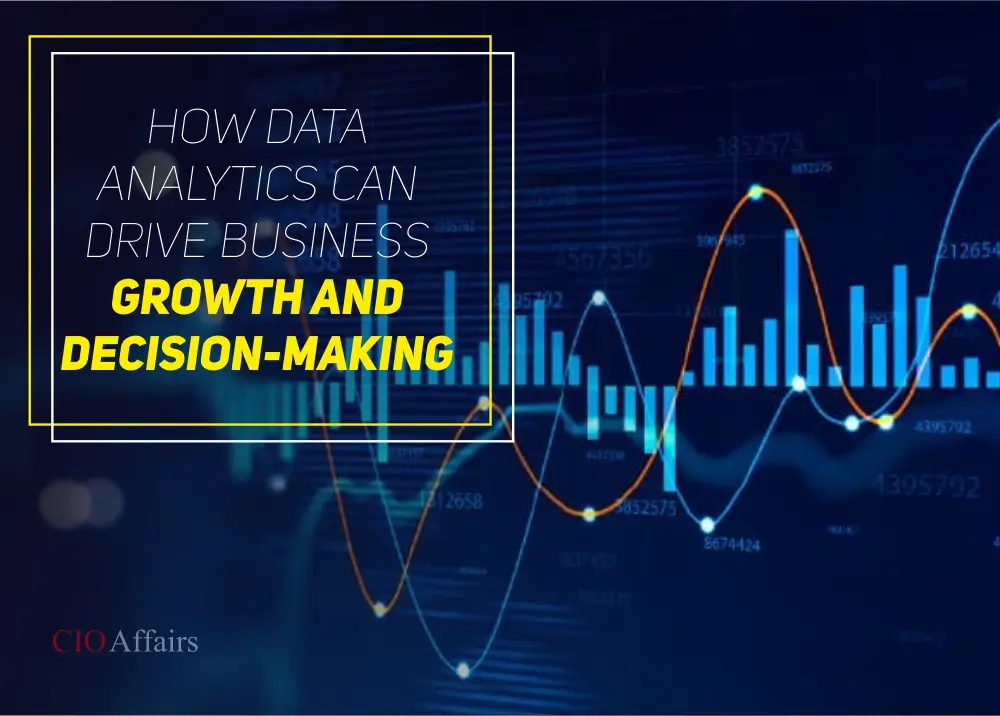In today’s hyper-competitive business environment, leveraging data analytics has become not just an advantage but a necessity for sustained growth and informed decision-making. With the advent of sophisticated analytics tools and a massive increase in data generation, organizations are positioned to harness insights that can significantly impact their strategic direction. This article explores how data analytics can drive business growth and decision-making, illustrating its transformative potential with real-world examples and insights.
Understanding Data Analytics
Data analytics involves examining data sets to draw conclusions about the information they contain. It encompasses various techniques and processes, including statistical analysis, predictive modeling, and machine learning. The goal is to extract meaningful patterns, trends, and insights that can inform business strategies and operational improvements.
- Enhancing Decision-Making
At its core, data analytics empowers decision-makers with empirical evidence rather than intuition. Traditionally, decisions were often based on gut feelings or historical precedents, which could be fraught with biases and inaccuracies. Today, data analytics provides a solid foundation of facts and trends that can lead to more accurate and objective decisions.
For example, a retail company might use data analytics to assess customer purchasing behaviors. By analyzing sales data, customer demographics, and browsing patterns, the company can identify which products are most popular among different segments. This information enables the company to tailor marketing campaigns, optimize inventory levels, and enhance product offerings in line with actual customer preferences.
- Driving Revenue Growth
Revenue growth is a primary goal for any business, and data analytics offers several pathways to achieve it. One way is through improved customer segmentation. By analyzing customer data, businesses can identify high-value segments and create targeted marketing strategies to attract and retain these customers.
Consider an online retailer that uses data analytics to segment its customer base by purchasing behavior, geographic location, and engagement level. With this information, the retailer can launch personalized promotions, recommend products based on past purchases, and optimize pricing strategies to maximize revenue.
Additionally, predictive analytics can forecast future trends and customer behaviors, allowing businesses to proactively adjust their strategies. For instance, a subscription-based service might use predictive models to anticipate churn rates and implement retention strategies before customers decide to leave.
- Optimizing Operational Efficiency
Operational efficiency is crucial for profitability and growth. Data analytics can streamline processes, reduce costs, and enhance productivity. By analyzing operational data, businesses can identify inefficiencies, bottlenecks, and areas for improvement.
For example, a manufacturing company might use data analytics to monitor machinery performance and predict maintenance needs. By analyzing data from sensors and historical maintenance records, the company can implement predictive maintenance schedules, reducing downtime and extending equipment lifespan.
Similarly, in supply chain management, analytics can optimize inventory levels, predict demand fluctuations, and improve logistics. Companies can use data to manage their supply chain more effectively, ensuring that products are available when needed without overstocking or incurring unnecessary costs.
- Enhancing Customer Experience
Customer experience is a significant determinant of business success. Data analytics can provide valuable insights into customer preferences, pain points, and satisfaction levels, enabling businesses to enhance their service offerings.
For instance, a restaurant chain might analyze customer feedback, social media interactions, and reservation data to understand dining preferences and service expectations. This analysis can lead to menu adjustments, personalized dining experiences, and targeted promotions that cater to specific customer needs.
Moreover, sentiment analysis tools can monitor online reviews and social media conversations to gauge public perception of the brand. By identifying and addressing negative sentiments promptly, businesses can improve their reputation and customer loyalty.
- Enabling Strategic Planning
Strategic planning requires a deep understanding of market trends, competitive dynamics, and internal capabilities. Data analytics provides the insights needed to formulate effective strategies and make informed long-term decisions.
For instance, a tech startup might use market analysis data to identify emerging trends and potential growth areas. By examining industry reports, competitor performance, and customer feedback, the company can develop a strategic plan that positions it for success in a competitive landscape.
Data-driven insights can also guide mergers and acquisitions. By analyzing financial performance, market share, and synergies between potential acquisition targets, businesses can make strategic decisions that align with their growth objectives.
- Measuring and Tracking Performance
Performance measurement is essential for evaluating the effectiveness of business strategies and initiatives. Data analytics provides tools to track key performance indicators (KPIs), assess outcomes, and make data-driven adjustments.
For example, an e-commerce business might track metrics such as conversion rates, customer acquisition costs, and average order value. By continuously monitoring these KPIs, the business can evaluate the success of its marketing campaigns, website design, and customer service strategies, making real-time adjustments to improve performance.
- Supporting Innovation
Innovation is often driven by the ability to identify new opportunities and market needs. Data analytics can uncover insights that inspire innovative solutions and drive competitive advantage.
For example, a pharmaceutical company might use data analytics to identify gaps in the market for new drug therapies. By analyzing patient data, treatment outcomes, and existing drug efficacy, the company can develop new products that address unmet medical needs, leading to breakthroughs in treatment and significant market opportunities.
- Facilitating Competitive Analysis
Understanding the competitive landscape is crucial for strategic positioning. Data analytics can provide insights into competitors’ strengths, weaknesses, and market positioning.
For instance, a consumer goods company might analyze competitors’ sales data, market share, and product reviews to identify areas where it can differentiate itself. This analysis can inform product development, pricing strategies, and marketing tactics that give the company a competitive edge.
Data analytics is a powerful tool that can drive business growth and enhance decision-making across various dimensions. By leveraging data-driven insights, organizations can make more informed decisions, optimize operations, drive revenue growth, enhance customer experiences, and innovate effectively. As the volume of data continues to grow and analytics technology advances, businesses that embrace data-driven strategies will be well-positioned to thrive in an increasingly competitive marketplace.
The journey towards effective data analytics requires not only the right tools and technologies but also a culture that values data-driven decision-making. By fostering a data-centric mindset and investing in the necessary skills and infrastructure, businesses can unlock the full potential of their data and achieve sustainable growth and success.
Top of Form
Bottom of Form










